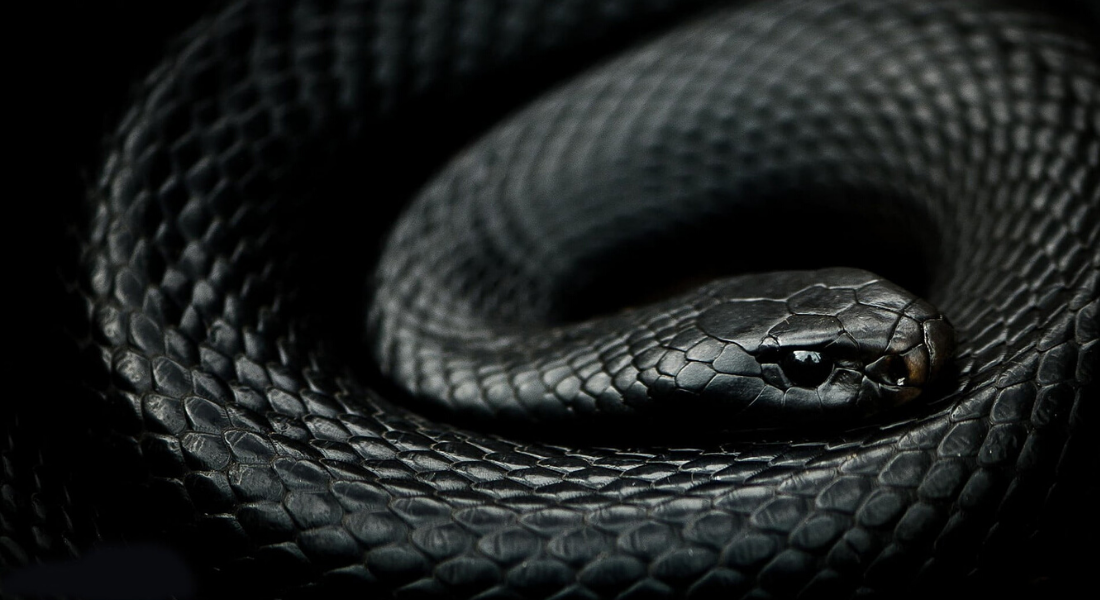Snakes are fearsome pests that may be found in areas near open fields, though sometimes, even inside building units. They are cold-blood reptiles that are related to lizards and crocodiles. At the first sighting of a snake residing inside or nearby your property, it is best to immediately call for help and have a professional snake removal expert take care of the problem
They are known to try to avoid humans at first encounter. It is not their first instinct to attack. However, if you happen to endanger its life by accidentally stepping on it or trapping it, it may be aggressive and attack afterwards. This is why they are considered a big threat.
In North America, there are about 120 species of these creatures. They are all carnivores, meaning that they hunt for meat instead of plants and fruits. They are known to take on preys that are smaller than them, although sometimes, they can devour larger ones. They are helpful in controlling rodent populations, but it will be better for humans for them to do this in places far from houses.
To get rid of snakes, you can use the following:
Snake traps
Snake traps work with the same idea of rat traps. They are also baited with food, and then caught with something that varies for every trap.
Sticky paper traps are good if you don’t want to put in much effort as they can be simply left lying in the place where the snake is most likely to come. They can then be released in the wild by pouring cooking oil on it.
Cage traps are more expensive. However, it is more reliable and reusable because of its metallic structure and strong frame (minnow traps). Cage traps are usually used if you want to trap heavier snakes as they can easily writhe their way out of sticky papers if they are strong enough. After all, a snake’s body is made up of mostly muscle, meaning that they can be pretty strong in survival situations.
Plastic cage traps also exists. It is recommended for those that don’t want to hurt the snakes. When the snake becomes attracted to enter the trap (it is because of the scent planted on its entrance), it will be trapped inside due to an adhesive. After capturing the snakes, you can then take them away into the woods for it look for another area to hunt prey.
The last part must also be noticed when you decide to use snake tongs. Although they can be used at a distance, it is only recommendable if you are able to have a strong grip over the snake. They will try to struggle by instinct when you catch them, and so you must be able to hold them tightly to prevent being bitten or from the snake hiding close to your area again.
Snake baits
Snakes are carnivores, meaning that they will only devour meat. Because, they hunt for smaller animals that may come in the forms of rats, mice, frogs, and geckos. These animals, if present in your garden or even inside your house may attract rats.
For those living near farm areas or large backyards, watch out for snakes if you happen to have chickens. Snakes will also hunt for these birds, and in the process, may be trapped inside their coop.
If you want to trap snakes inside your property, you might want to consider using rats or mice as bait.
Snake repellents
If you don’t want to directly have contact with the threat, repellents may be the answer for you. The best type of repellent for snakes are mothballs. It would be better if you would use one that is flaked as for you to be able to spread it in the area where snakes are most likely to pester. They may be a hazard though if you happen to have pets or children which may come in contact with it, so watch out for that.
There is a general debate about the effect of other snake repellents. Some recommend to use predator urine as to drive them away, believing that the scent of a fox or a coyote will be able to drive the snake away. This is because the mentioned animals are the predators for snakes in the wild. The main point for using these though is for its ammonia, which is believed to drive snakes away. Predator urine can be bought commercially in the forms of liquid or flakes.
Some also recommend the use of human hair. Just sprinkle the hair around the area where the snake frequents and the snakes might be driven away. Sulfur is also used by some, with it sometimes even being mixed along with mothballs.
If these aren’t able to drive the snakes away in your house, the best solution will always be to call for snake control as they are experts in keeping these pests away.
Snake removal services
As mentioned above, snake removal services are the best solution to snake problems in your house or near your property. Snakes generally do no attack humans if they are not provoked or threatened, but if you happen to see a venomous or a poisonous one in your area, calling for snake services must be a priority.
Snake removal services can be searched online, and there are a lot of it in countries or areas that are mostly warm and has a lot of vegetation. Texas and California are good examples of states that has lots of snake removal services (as they are also frequented by these reptiles).
Q&A
1. How to keep snakes away?
Snakes are generally kept away by removing everything that they might hunt for in your house. This might be a hard task for those who tend to gardens or take care of poultry in their properties. You may try using snake repellents, but if that proves to be ineffective, snake traps can instead be used to be able to dispose of the reptiles yourself.
2. How do you get rid of snakes in your yard?
Yard snakes hunt for mice, rats, or frogs in your yard. If there is an abundance of these in your yard, you might want to target the prey population first before dealing with the snakes as they actually limit the continued growth of the mentioned animals in your yard. Eliminating them first might make the former reproduce freely, giving you another headache.
3. How do you get rid of snakes in your house?
Having snakes in your house may be a dangerous situation. Even though snakes don’t really hunt for people, they react very defensively if you manage to stress them or surprise them. You might not be even able to see one, but you might manage to accidentally cause one to attack you out of defense.
Snakes enter houses to look for rats or mice. This is why they often slither through spaces where you might not expect them including the ceiling or inside cupboards.
The best solution to having snakes in your house is to call for snake removal services as confronting them to your own devices inside the small space of your house may prove to be fatal if you have no knowledge in dealing with them.
4. How do you get rid of rattlesnakes?
Rattlesnakes pester yards or gardens that have an abundance of rodents. The best way to deal with them is to completely avoid them, as they will not attack humans if unprovoked. They will try to escape when you come in contact with them, but if cornered, might attack in defense.
If you have pets that might be endangered or if you are worried about accidentally stepping on one and being bitten after, call for snake removal services. Don’t forget about your rodent situation though!
Snake species
As urban areas continue to increase in size, their gap with the rural community becoming smaller and smaller, the chance for encounter between humans and snakes are also increasing. This is why snakes can be found even in highly-populous and urban areas.
Georgia is known for having the highest biodiversity of snakes in the US. It can be found all along the state, including areas near mountains, which is the Northern Georgia, and those near the barrier islands near the Atlantic coasts. The abundance of snakes in the state makes it good for observation of the said reptile.
Texas is also notable for having ten species of rattlesnakes. Examples of these include the Mottled Rock rattlesnake, Timber rattlesnake, and Blacktail rattlesnake. Given the environment and the temperature in Texas, snakes thrive and are naturally present in their environment.
In Florida, 44 species of snakes are found. They can be seen in dryland, freshwater wetlands, mangroves, and even in residential areas.
All of these states have long adapted to the presence of snakes in their areas. Because of this, they have a general respect for the reptiles as it helps maintain their area’s eco-balance. The presence of snakes usually indicate a healthy sense of food-chain the area and killing them would disrupt it. Venomous snakes aren’t hunted and are mostly ignored.
Snake facts
–Snakes that are kept in captivity can live as long as 30 years, the exact amount determined through its diet and lifestyle. Snakes that are in the wild live shorter lives and depends on the environment which they will inhabit. The most common cause of death for snakes are respiratory problems. Because they are cold-blood, they cannot have fevers that warm-blooded animals have when infected, therefore having a harder time in fighting off infections that may happen within them.
-North America has a population of black and white snakes. They are mostly non-poisonous. Because of their colors, they can be easily distinguished and seen in the wild. Examples of species that shows these colors include the Black Rat snake, California King snake, Eastern Garter snake, Southern Black racer, and the Gopher snake.
-Two-headed snakes aren’t only a work of fiction, they actually exist in the wild! This condition is not limited to snakes as they can also be seen in turtles and birds. This condition is called bicephaly. Snakes can display this trait. You must not be surprised to see one, as they are real and definitely not a sign of other-worldly miracles.
-Diamondback water snakes are known to be extremely aggressive snakes, a trait which is innate for this particular kind. They are known to release fecal matter and musk when agitated. They are not venomous, but they should still be avoided to avoid being harmed. They can be distinguished by greenish to brownish body.
-Snake eggs can be seen in the wild in the form of leathery forms that are softer than bird eggs. Snakes lay their eggs underground for it to incubate. They will abandon it after laying, with the cobra and the python being an exception from this behaviour. They can be about two to a hundred eggs, varying in amount according to the species. When you happen to see one exposed, it is better to leave it as it is to avoid killing the developing snake. (Side note: not all snakes lay eggs as species like garter snakes and rattlesnakes give birth to live ones)
Snake species
Snakes have a lot of variety in species. They can be separated from each other by observing their colors and the patterns in their bodies. Do not do this up close though to prevent the snake from becoming hostile against you. Here are some of the most common ones that you may encounter:
1. California king snake
This one might be familiar to you. It is because the species is mostly kept as pets. They are easily domesticated as they can survive most habitats, a good sign that they can be held captive. They are cannibalistic, though, meaning that you will have to be careful in giving them mates. When threatened, they release a musk and shake their tails. They can be distinguished from their black or brown colors.
2. Ball python
Ball pythons are distinguishable by their large bodies and brown and black-colored bodies. They are constrictors meaning that they squeeze their prey first to death before eating them. They are relatively short, growing only three to four feet. They are neither poisonous nor venomous.
3. Cobra snake
They are one of the most famous and recognizable snakes mostly due to their hoods and their straight and proud posture. Cobras aren’t recommended being domesticated as they are venomous. A fully grown cobra can reach up to 18 feet in height, meaning that they can easily kill a fully grown adult person. When threatened, they can also spit towards prey, with it being venomous. Immediately avoid one if you happen to see it in the wild.
4. Copperhead snakes
As seen in their name, their colors vary from chest-nut brown up to lighter brown or pinkish. They are known to bite people, however, their bites are usually non-fatal. They are known to target prey using their heat-seeing eyes.
5. Bull snake
Also known as gopher snakes, they can be distinguished with their brown and dark green colors. They grow from three to six feet. They are non-venomous, relying on constricting its prey before eating it.
6. Rat snakes
Rat snakes are very common in the wild, their colors ranging from dark tones of black, red, and yellow, and white-and-black. They are non-venomous. True to its name, rat snakes are not much of a threat for humans and is a good predator for hunting rodents.
7. Milk snakes
Milk snakes stand out in appearance due to their Nemo-like design. Their banded bodies and striking colors differentiate them among the rest. They are good to keep as pets as they pose only a low threat for humans and mainly stick to hunting rodents and small animals for food.
8. Red-bellied black snakes
Red-bellied snakes are distinguishable with, as how their names suggest, red bellies. They hunt in both land and water. They are venomous but aren’t really aggressive when encountered.
9. Ribbon snakes
These snakes resemble long belts except for its belly which is white. They are thin, but they can grow as long as 18-35 inches long. They are semi-aquatic. Their colors make them good for camouflage.
10. Ring-necked snakes
These snakes can be distinguished with their necks which naturally forms a ring of scales that have a different color from the rest of its body. They are only slightly venomous.
11. Hognose snakes
Their upturned noses are their defining features. They are venomous to their prey, but aren’t to humans.
12. Northern water snakes
They are known to hunt mostly in the water. Their body colors range in the hues of brown. They feed on amphibians and fishes. They are not venomous.
13. Black racers
Black racers are large snakes that are black in color. They are very fast, capable of running 4 miles per hour. They are non-venomous.
Snake diets
Snakes are known to balance the ecosystem in the wild and in farmlands by targeting rodents as prey. They also eat amphibians, fellow snakes, and birds. They are carnivores.
Snake habitats
They reside mostly on land, but can also prefer to stay near water.
Types of baby snakes
Baby snakes are more irritative than their adult counterparts when disturbed. Copperhead snakes and cottonmouth snakes are examples of these.
Snake identification
The best identifies for snakes include color, eye characteristics, and length of face and body.
Poisonous and non-poisonous snakes
The difference between poisonous and non-poisonous snakes depends on their species, but is shouldn’t really be much of a concern for you if you won’t be touching or eating one.
Snake droppings
Snakes poo and pee at the same time. Their droppings can be distinguished by its fat shape and the wide cap along with it (from the urea of the snake).
Q&A
- What are the most venomous snakes in the world?
These include the King Cobra, the Inland Taipan, and the Belcher sea snake. Their venom are strong enough to kill hundreds or more people. Being bitten by one usually causes paralysis, tissue damage, and death.
2. Are garden snakes venomous?
They are not venomous but you should still avoid being bitten by one as they still cause swelling and redness.
3. What does a snake bite look like?
Snake bites are imprinted on victims with two large dots, which are punctures from the snake’s fangs.
4. Are rattlesnakes venomous?
Rattlesnakes are venomous. Even though they aren’t aggressive, you should still avoid them.
5. What is the most dangerous snake in the world?
This one can be up for debate. However, the Black Mamba is a worthy contender for the title as it is capable of running 12 miles per hour, easily following its prey. It is also very venomous and aggressive when cornered.
6. Are water snakes venomous?
There many water snakes that aren’t a threat, but there are also some that are extremely venomous. An example of this is the Belcher sea snake.
The best way to get rid of snakes
There are a lot for you to get rid of snakes, which includes rat traps, rat repellents, and others. Though all of them have their ways of getting rid of snakes, only wildlife removal is sure to take care of the issue. They are better equipped than anyone in making sure that pests around you area will be taken care of. They are also experts in giving you advices on how to secure your house from the return of these pests.





